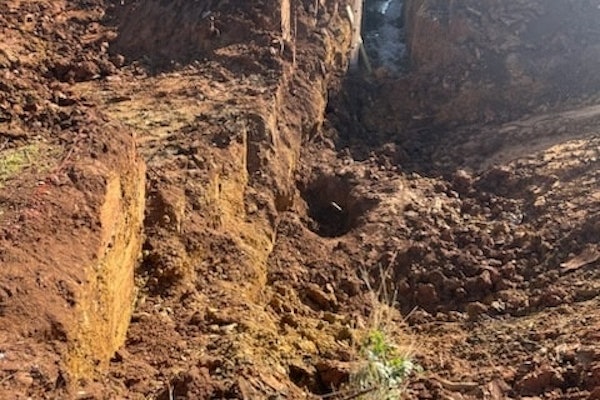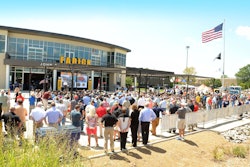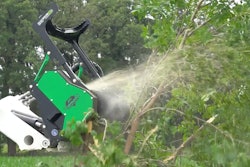| Just looking at them you wouldn’t know that today’s generation of bulldozers is all that different from those produced in the middle of the decade. But underneath the familiar sheet metal of today’s mid-size machines sits a mother lode of new technology that in 2005 was just a twinkle in the engineers’ eyes.
Weight and horsepower still matter, but the new technology enables today’s machines to do more work in less time and with less fuel burned. It also helps less skilled operators execute higher quality work and it gives fleet managers web-based tools to closely track machine health and maintenance needs. In this article we look at a narrow market slice of bulldozers, those with ratings between 160 and 210 horsepower. But many of their technology enhancements apply to a wide range of dozer sizes. Also, a heads up: 2011 brings a new round of emissions standards for off-road diesel engines, otherwise known as Interim Tier 4. These engines will require diesel particulate filters and exhaust aftertreatment – enough new componentry to change some sheetmetal profiles. Most manufacturers are also planning to boost injection pressures and add additional fuel filtration and fuel coolers as well. This won’t be a traumatic change, but it will add costs without any performance advantage, so you may want to keep this in mind and consider upgrading your dozers in 2010 rather than 2011. ECUs decide for you Individual contractors and dealers have been adding automatic grade control systems, laser and GPS as far back as the late 1990’s. But in the past five years most yellow iron manufacturers have set up their production lines to produce grade control-ready machines straight from the factory. Making a dozer grade control ready isn’t particularly expensive, running around $10,000. The factory adds electro-hydraulic controls and the wiring harness and welds brackets for the monitors in the cab and the antennae mounts for the blade. All the contractor has to do after that is purchase his preferred brand of electronics (typically Topcon, Trimble or Leica) and plug them in, calibrate and go to work. GPS hardware from the companies mentioned above might run you another $40,000 to $60,000 but many contractors say that such systems properly used can pay for themselves within a year. The great transmission debate “The powershift has been an excellent transmission for us,” says Darren Knutson, D6T project engineer for Caterpillar. “It’s reliable in the field and the customers like the modularity of it.” Cat has added two intermediate speeds to the D6T transmission, turning this into a five-speed dozer with intermediate speeds between first and second and second and third. “Essentially you shift up and idle back,” Knutson says. “For a lot of fine dozing, people want to run a little bit faster, but not as fast as the next gear. This is a feature they can turn on and off and get the speed they’re looking for in a conventional powershift transmission.” Komatsu uses what it calls its Torqflow transmission in the 160- to 210-horsepower range, says Bruce Boebel, product manager, Komatsu dozers. This consists of a water-cooled, three-element, one-stage, one-phase torque converter and planetary gear with a multiple disc clutch transmission that is hydraulically actuated. Electronic controlled modulation valve technology automatically adjusts each clutch engagement depending on travel conditions such as gear speed, revolution and shifting pattern to provide smooth, shock-less clutch engagement for a better ride and longer component life. On the hydrostatic side, Deere offers dual path hydrostatic transmissions with power mananagement and automatic load sensing. Its electronic control units interface with the transmission controller to eliminate gear shifts for the operator. “The operator basically lets the machine maximize production for them,” says Dan Drescher, product marketing manager for crawlers at Deere. “As the load builds up, the engine and the transmission interface with each other to maximize power to the ground and power through the drivetrain. The operator picks the maximum speed they want and the machine automatically compensates for the load, ground speed and torque to the ground.” Hydrostats also enable full power turns and counter rotation, increasing maneuverability with or without a load. A recent addition to the Deere hydrostatic system are the various mode settings the operator can select on the cab monitor, including choosing the aggressiveness of the shift, steering and deceleration. “For example, if there is an application where they want a quicker blade response, but a very slow ground speed they can flip it to transmission decel and not engine decel so the engine will stay at a set rpm and the transmission can be brought down to a crawl by using the decelerator,” Drescher says. Eye in the sky Contractors, however, stand to gain considerably by using the telematics data. With it you, or the guy in your service truck, can instantly locate the machine – no need to phone supervisors or operators. You can also get maintenance reminders or alerts when a machine starts to have problems. If theft prevention is important, telematics can enable you to set up a geo-fence around a machine and send you an alert anytime that machine moves outside the boundaries. If you’re looking for ways to save fuel, a telematics system can tell you how many hours a day a machine spends idling and how many working. You can show operators when they let machines idle too much and monitor their progress in eliminating unnecessary idle time. Blade designs Deere made several changes to its blades with the introduction of the J series in 2005, says Drescher. These include taller blades with increased performance characteristics, a heavy-duty blade option and inside-mount PAT and outside mount straight and semi-U blades with purpose built mainframes. Komatsu uses high strength steel castings in the high stress areas of the blade assembly. These are seamless, one piece structures with uniform strength and resistance to bending and torsional stress, Boebel says. Variable speed fans |





